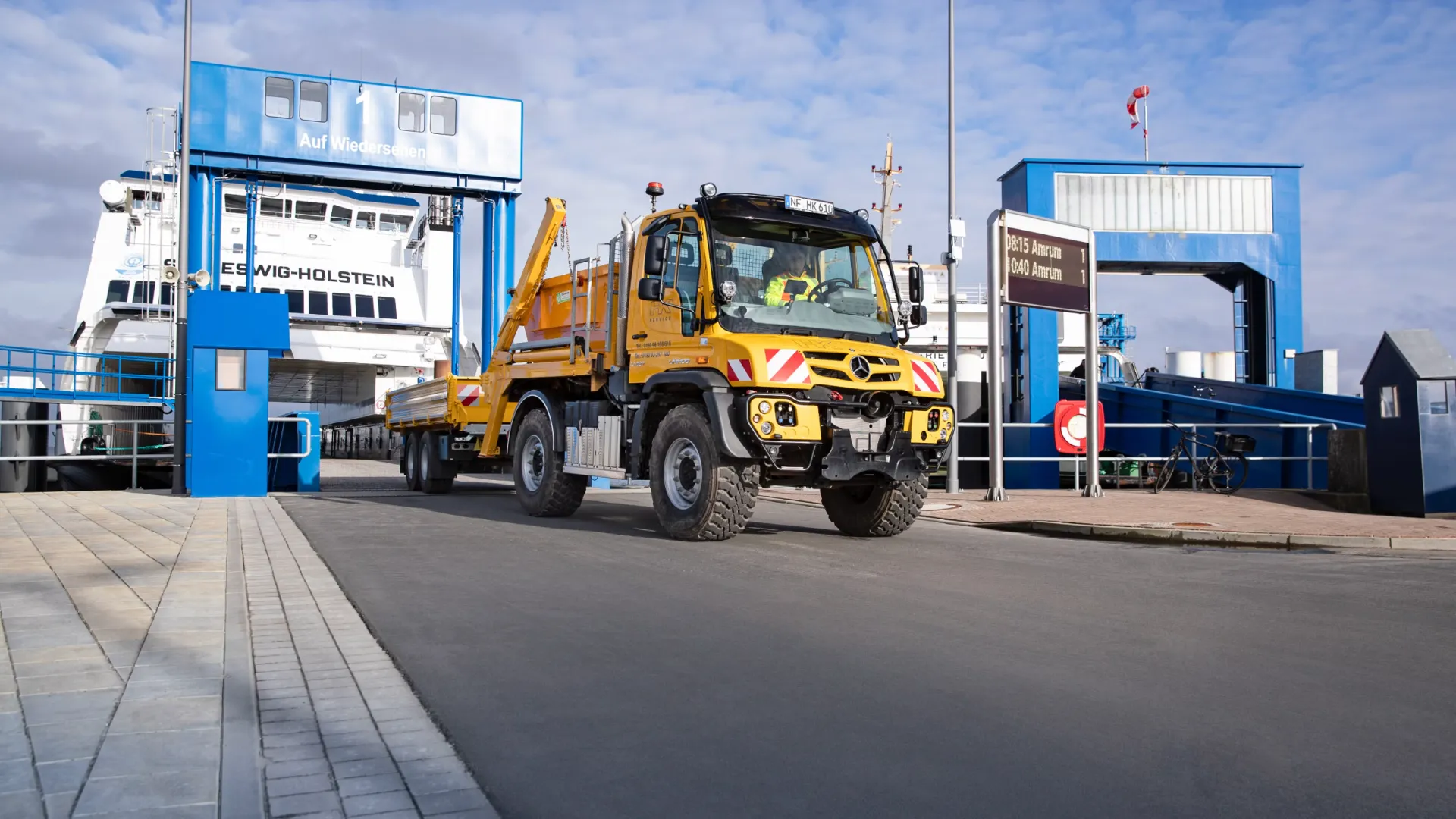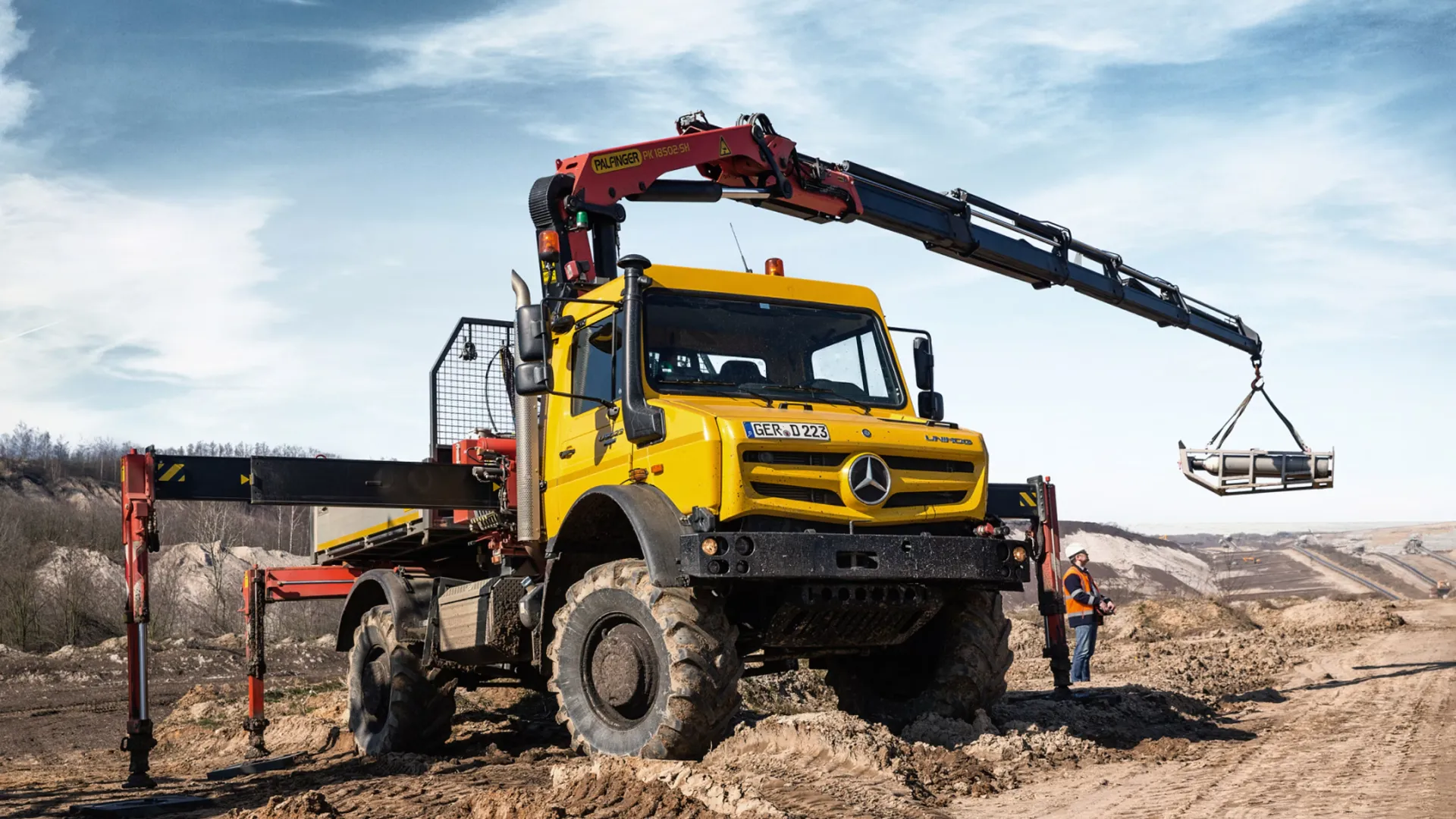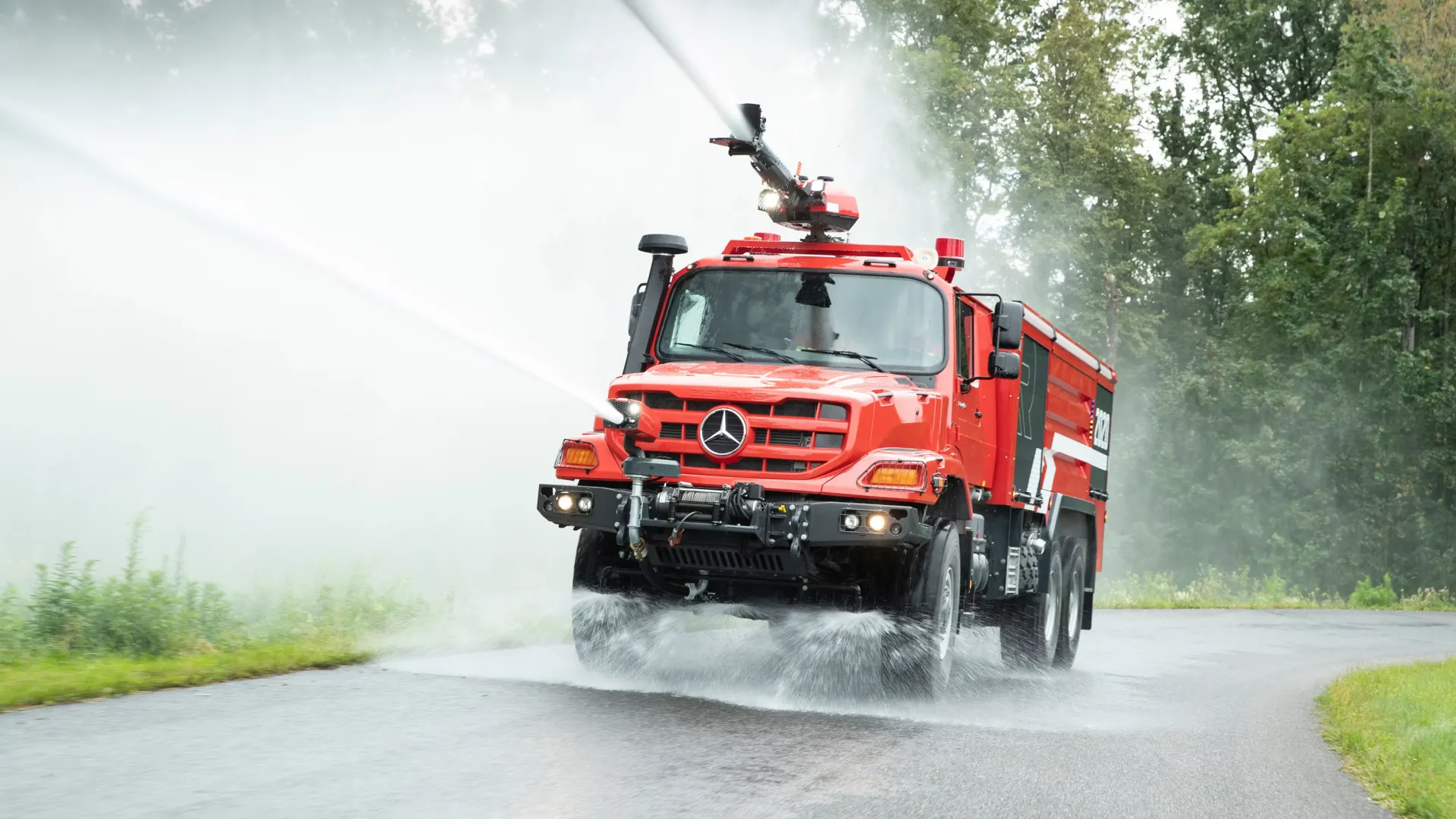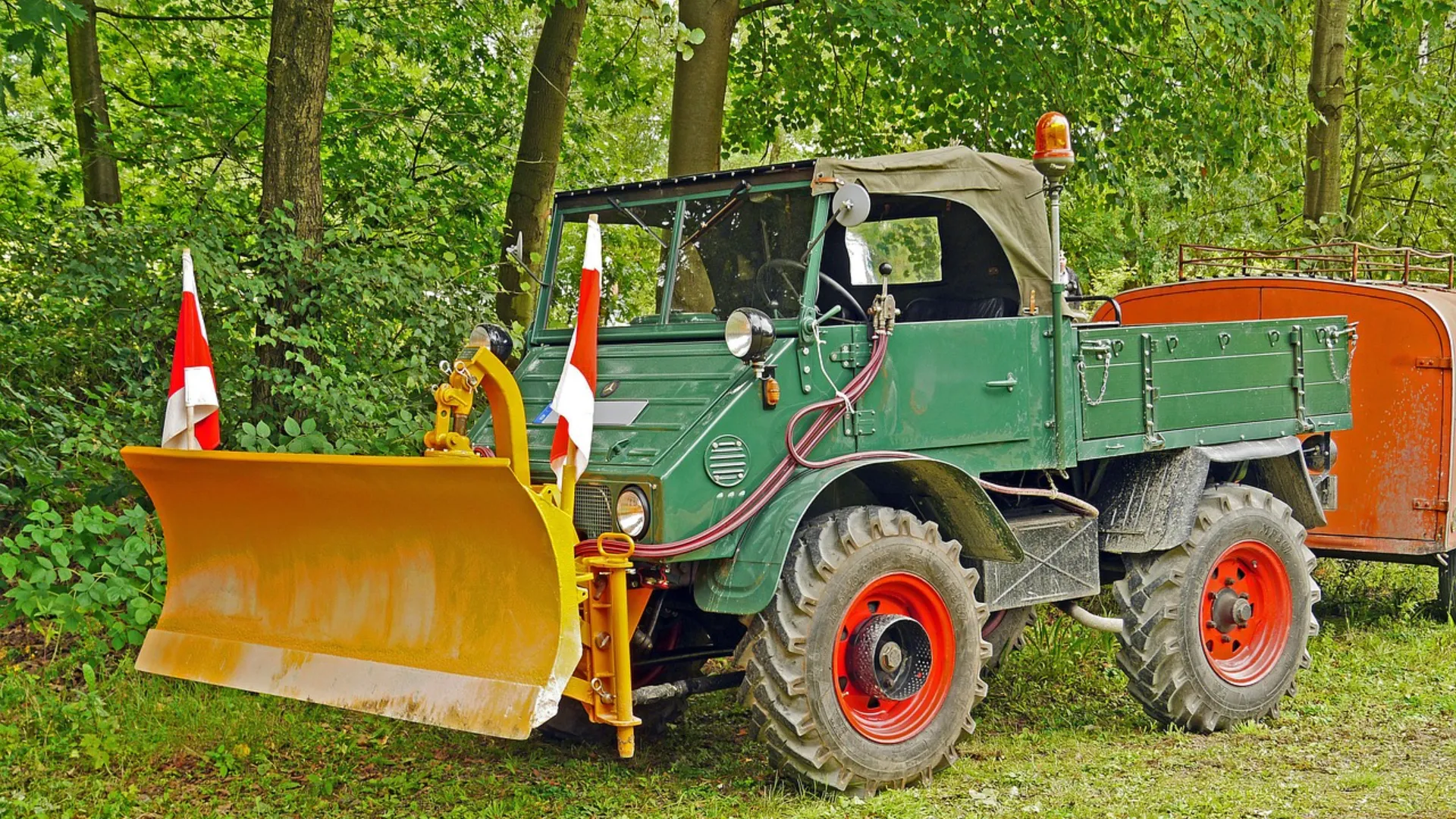
Unimog Guide Part 1: A Legend is Born
- Jackson Whitmore
- Automotive , Adventure
- August 19, 2025
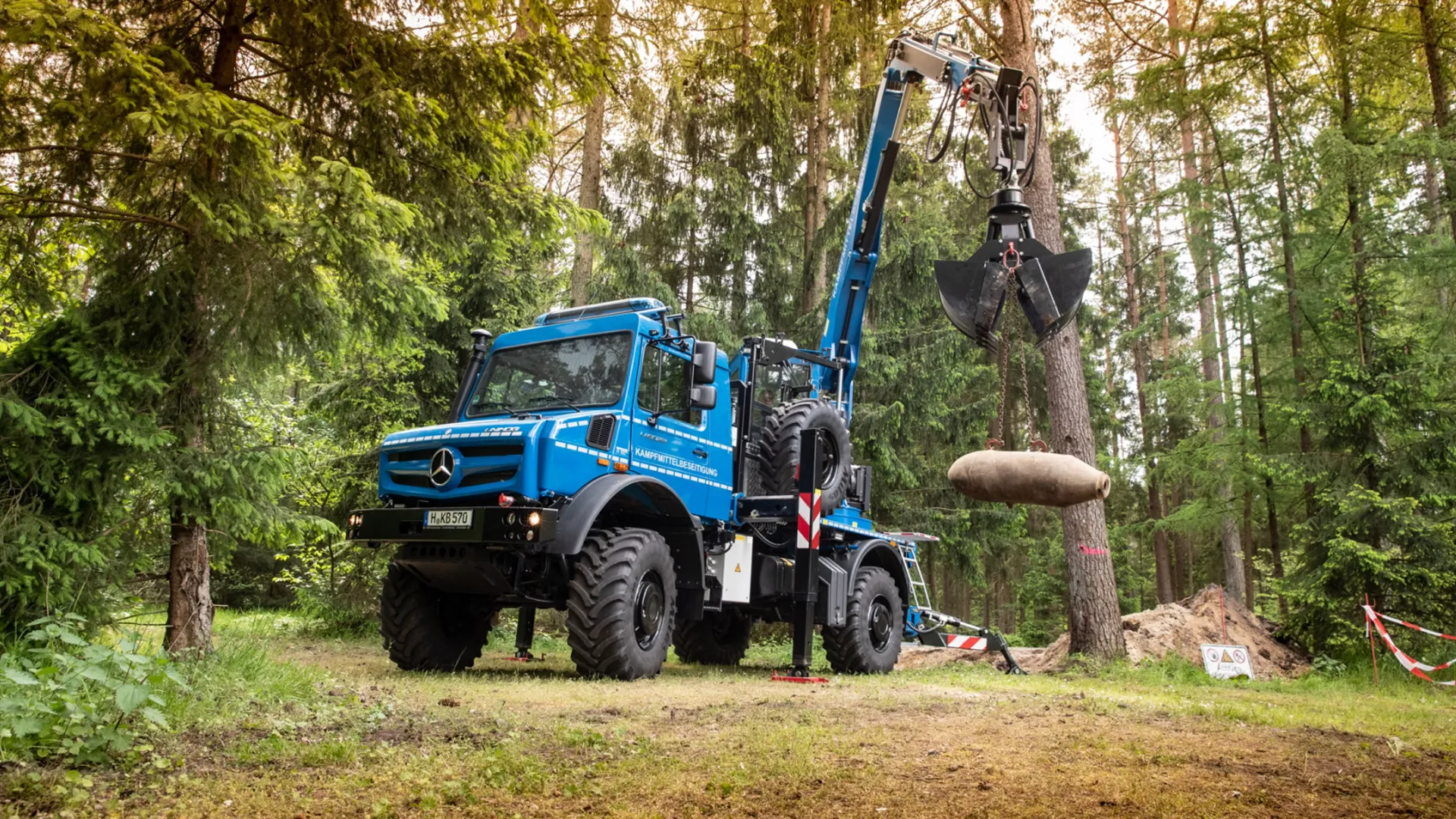
Introduction: Meet the Mighty Unimog
Ever found yourself stuck in a muddy rut and thought, “If only I had a vehicle that could go anywhere?” Well, that vehicle exists—and it’s been crushing the impossible for over 75 years. Say hello to the Mercedes-Benz Unimog, the vehicular equivalent of that friend who’s annoyingly good at everything.
Picture this: a truck that can wade through rivers nearly 4 feet deep (your SUV would be floating at this point), climb slopes so steep they’re practically walls (we’re talking 45-degree inclines), and then casually cruise down the highway like it’s just another Tuesday. That’s the Unimog for you—showing off since 1946.
But here’s the thing—the Unimog isn’t just about impressive specs. It’s about what those capabilities enable you to do. It’s about reaching the unreachable, accessing the inaccessible, and accomplishing the seemingly impossible. When a wildfire threatens remote communities, when flood victims need rescue from rising waters, or when humanitarian aid must reach isolated villages—that’s when the Unimog truly shines.
You’ve probably spotted these distinctive beasts somewhere—maybe clearing avalanches in the Alps, battling wildfires in Australia, or kitted out as a luxury expedition vehicle crossing the Sahara. That high-riding stance and those massive portal axles aren’t just for show (though they do look pretty badass)—they’re the reason Unimog owners can confidently go where others simply can’t.
So what’s the deal with these mechanical mountain goats? Why are they still around when most vehicles from the 1940s are nothing but black-and-white photos in automotive history books? And why do Unimog owners get that smug little smile when you ask about their vehicle?
Buckle up, my friend—we’re about to dive deep into the world of the Unimog. From its humble beginnings as a post-war agricultural tool to its current status as the ultimate go-anywhere vehicle, this is one automotive story that’s anything but ordinary. And by the end, you might just find yourself plotting how to get one in your garage.
Unimog at a Glance: Key Specs and Capabilities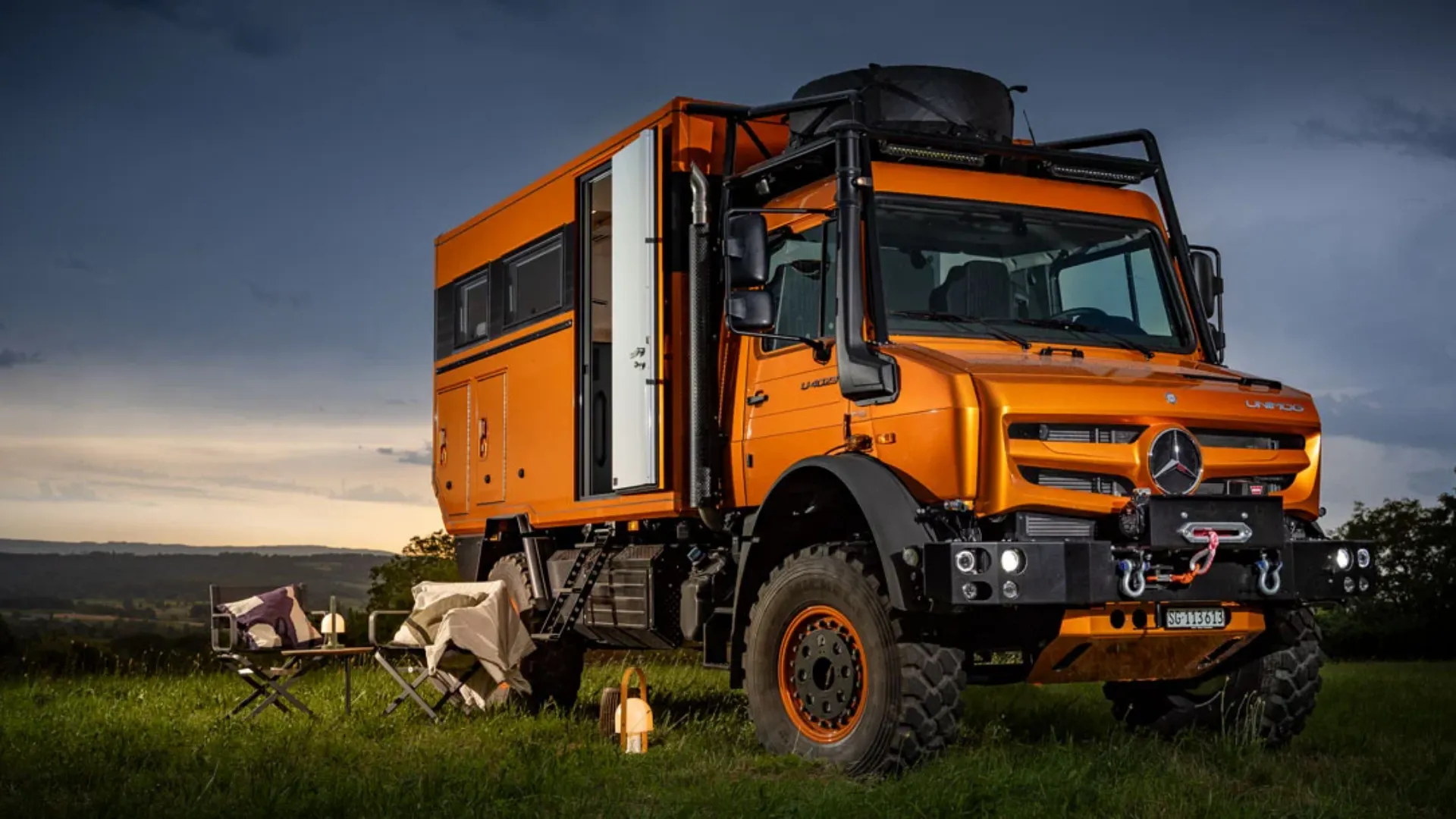
Before we dive deeper, here’s what makes the Unimog truly exceptional:
| Capability/Feature | Specification | Real-World Benefit |
|---|---|---|
| Ground Clearance | Up to 500mm (19.7") | Navigate over obstacles that would stop other vehicles dead in their tracks |
| Fording Depth | Up to 1.2m (3.9ft) | Cross rivers and flooded areas without specialized equipment |
| Climbing Ability | Up to 100% gradient (45°) | Access remote locations and work sites inaccessible to conventional vehicles |
| Axle Articulation | Up to 30° | Maintain traction on wildly uneven terrain where other vehicles lose contact |
| Approach/Departure Angles | 44°/51° (U 5023) | Enter and exit steep terrain without damaging the vehicle |
| Engine Options | 4-6 cylinder diesel, 156-300 HP | Power through demanding conditions while maintaining reliability |
| Tire Pressure Control | On-the-fly adjustment | Optimize traction for any surface without leaving the cab |
| Differential Locks | 3 (front, rear, center) | Ensure power reaches the wheels with traction, not those spinning freely |
| Payload Capacity | Up to 10 tons | Carry heavy equipment to remote locations without needing multiple vehicles |
| Service Life | 30+ years with proper maintenance | Exceptional return on investment compared to conventional trucks |
Origins and History: Born from Post-War Necessity
The Birth of an Icon (1945-1948)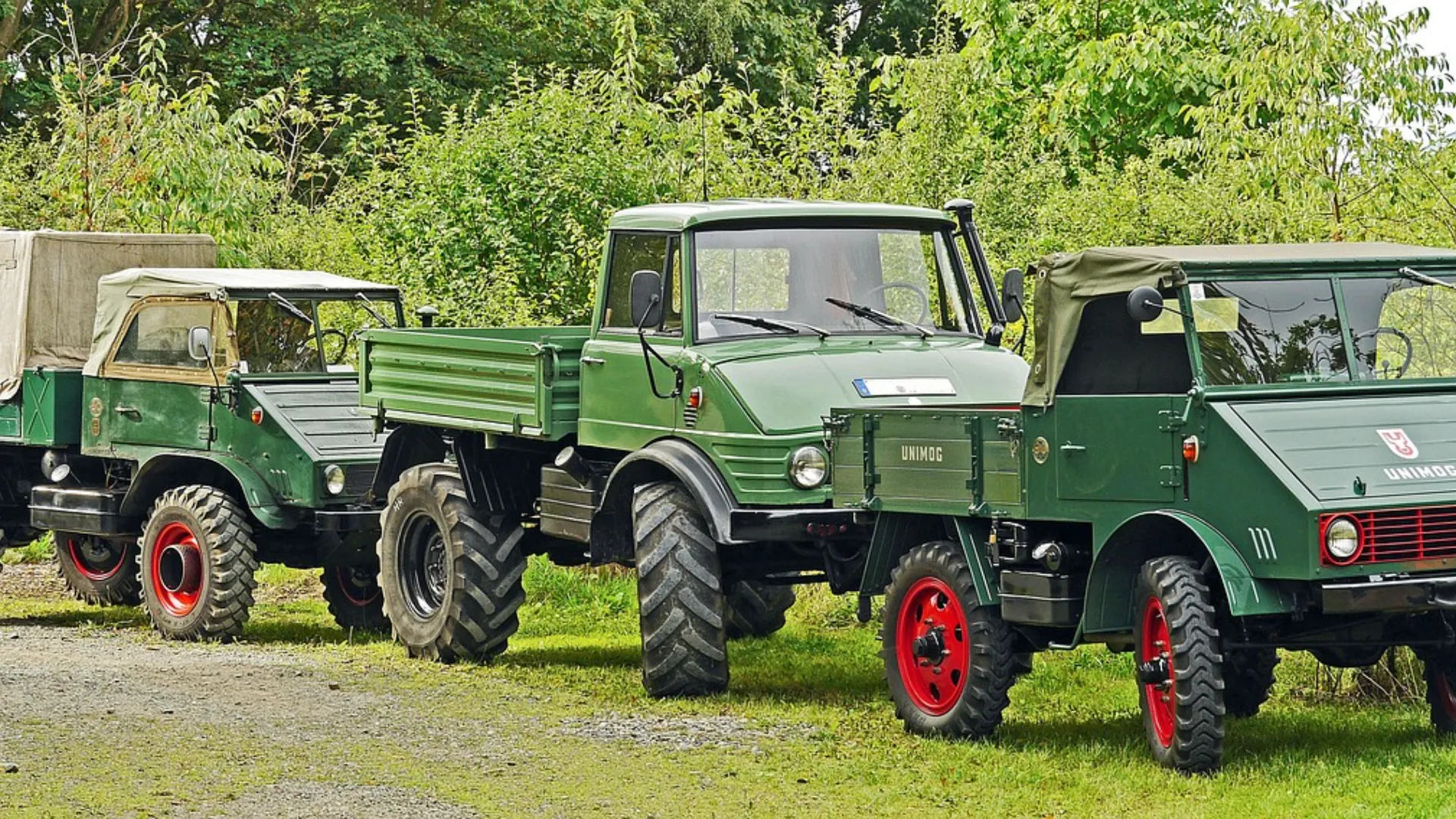
The story of the Unimog begins in the aftermath of World War II, when Germany was rebuilding and facing severe food shortages. In late 1945, Albert Friedrich, the former head of aircraft engine design at Daimler-Benz, recognized that German farmers desperately needed a versatile agricultural vehicle that could replace both tractors and trucks.
Friedrich assembled a talented team of engineers, including Heinrich Rößler and Hans Zabel, to develop a revolutionary new vehicle concept. Their vision was ambitious: create a compact, all-terrain vehicle with equal-sized wheels, high ground clearance, and the ability to operate agricultural implements while also serving as reliable transportation.
The name “Unimog” itself reveals the vehicle’s original purpose. It’s an acronym for “Universal-Motor-Gerät” (Universal Motor Machine), a name coined by engineer Hans Zabel. This perfectly captured the vehicle’s intended versatility.
By late 1946, the first prototype was ready for testing. Chief designer Heinrich Rößler himself took the wheel for the initial test drive, navigating rough forest roads with a full load of timber. The prototype featured no hood and looked quite different from later models, but its fundamental engineering principles were already in place.
From Boehringer to Mercedes-Benz (1948-1951)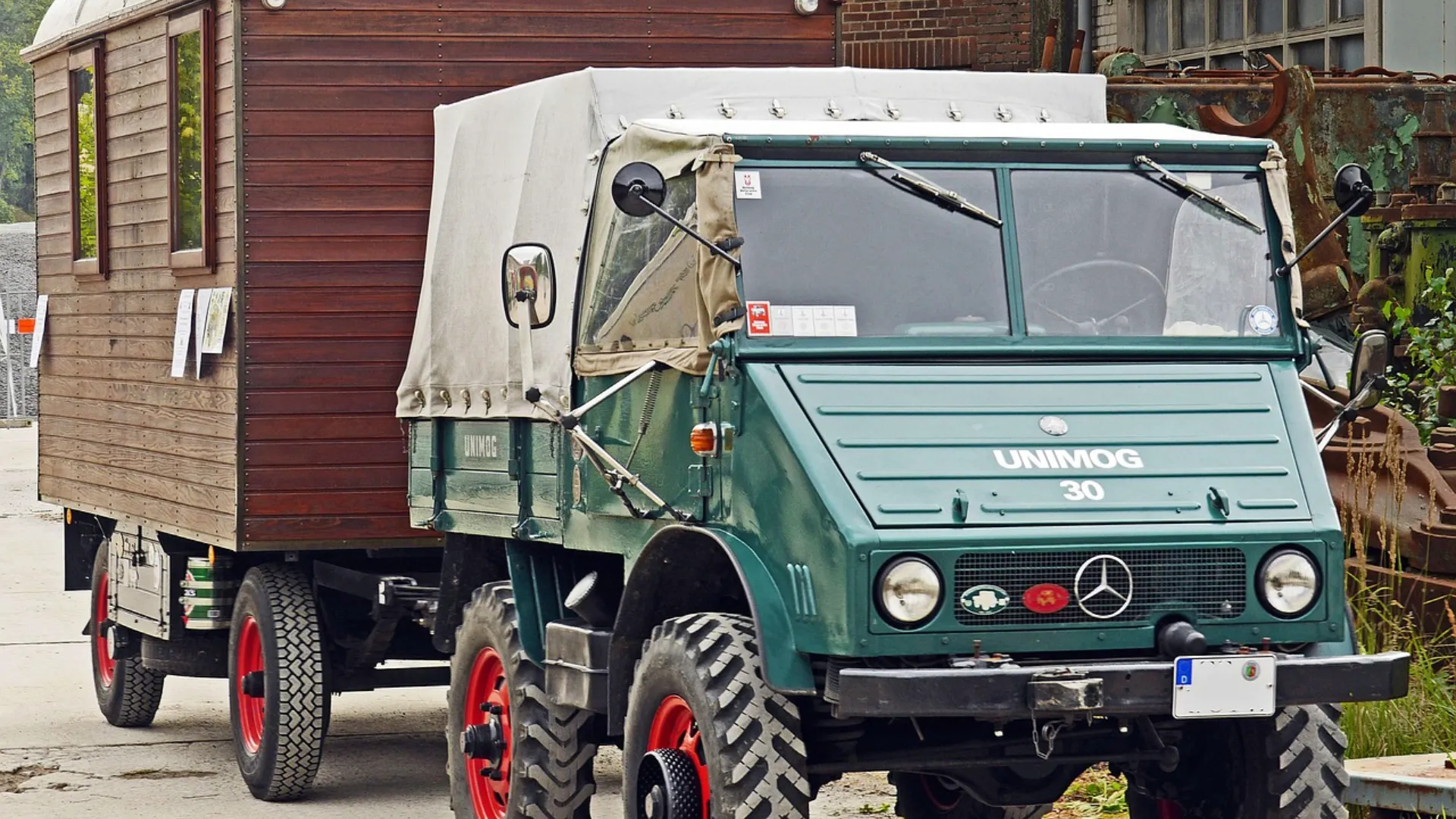
In 1948, the Unimog made its public debut at the Frankfurt Agricultural Show, where it garnered significant attention for its innovative design and capabilities. The first production models, known as the 70200 series, were manufactured by Boehringer, a tool manufacturer in Göppingen. These early Unimogs featured a distinctive ox-head logo on the hood—a far cry from the Mercedes star that would later adorn them.
Only about 600 of these original Boehringer Unimogs were produced, and today they’re extremely rare collectibles—with approximately 120 still in existence. As demand grew, Boehringer’s limited production capacity proved insufficient.
In 1951, Mercedes-Benz took over Unimog production, moving operations to their truck plant in Gaggenau. The vehicle was rebranded as the “Unimog 25 PS” (referring to its 25 horsepower engine), and production ramped up significantly. Within the first seven months at Gaggenau, over 1,000 Unimogs rolled off the assembly line—nearly double what Boehringer had produced in total.
Evolution Through the Decades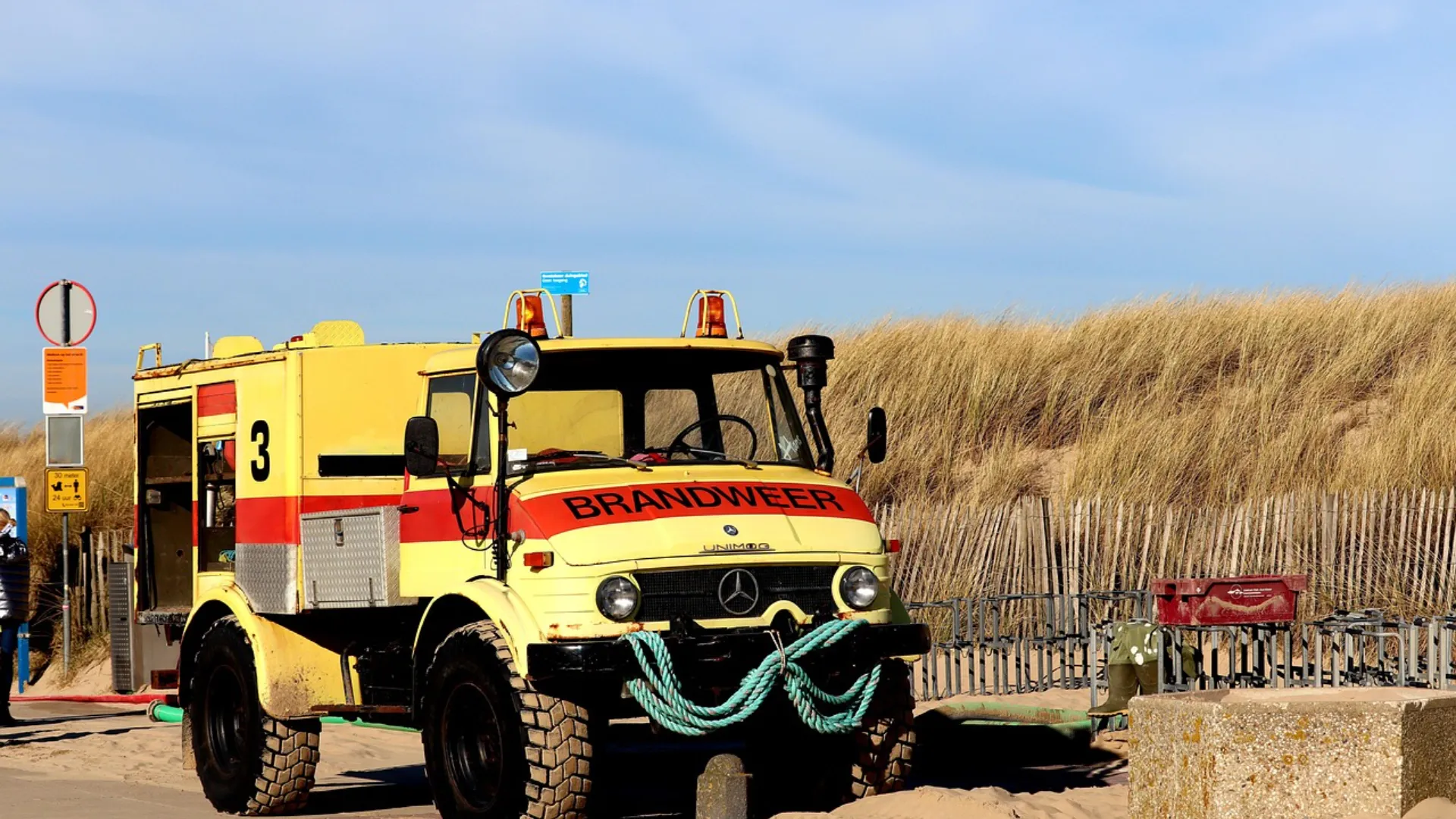
The 1950s saw rapid development of the Unimog concept. In 1953, the 401 and 402 series were introduced, with the latter featuring a longer wheelbase. That same year, an enclosed cab became available as an option, making the Unimog a true all-weather vehicle.
The Unimog 404 series, introduced in 1955, marked a significant shift in the vehicle’s purpose. Designed primarily for military use during the Cold War, the 404 was more of a mobile cross-country truck than an agricultural implement. The German Bundeswehr became the primary customer, and the 404 would go on to become the most-produced Unimog variant ever, with over 64,000 units manufactured between 1955 and 1980.
Through the 1960s and 1970s, the Unimog continued to evolve with more powerful engines, improved transmissions, and expanded capabilities. The 1960s saw the introduction of the heavy-duty 406 series, which featured a more powerful diesel engine and improved off-road capabilities.
By the 1980s and 1990s, the Unimog had firmly established itself as the ultimate all-terrain vehicle, with applications ranging from military and firefighting to expedition travel and municipal services. Production moved to Wörth am Rhein in 2002, where Unimogs continue to be manufactured today.
Also Read
- The Ultimate Guide to the MAMMOTION LUBA 2 AWD Robotic Lawn Mower
- Segway Xyber Electric Bike - The Future of Urban and Adventure Riding
- Solar Panels for Home: A Complete No-BS Guide for Homeowners
This is Part 1 of our comprehensive guide to the Mercedes-Benz Unimog.
- Next up: Part 2: The Engineering Genius of the Unimog . We’ll dive deep into the portal axles, flexible frame, and other innovations that make this vehicle unstoppable.


